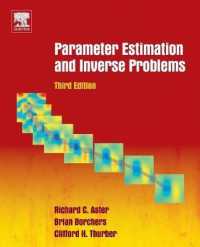Full Description
Forensic botany is the application of plant science to the resolution of legal questions. A plant's anatomy and its ecological requirements are in some cases species specific and require taxonomic verification; correct interpretation of botanical evidence can give vital information about a crime scene or a suspect or victim. The use of botanical evidence in legal investigations in North America is relatively recent. The first botanical testimony to be heard in a North American court concerned the kidnapping and murder of Charles Lindbergh's baby boy and the conviction of Bruno Hauptmann in 1935. Today, forensic botany encompasses numerous subdisciplines of plant science, such as plant anatomy, taxonomy, ecology, palynology, and diatomology, and interfaces with other disciplines, e.g., molecular biology, limnology and oceanography.
Forensic Plant Science presents chapters on plant science evidence, plant anatomy, plant taxonomic evidence, plant ecology, case studies for all of the above, as well as the educational pathways for the future of forensic plant science.
Contents
1. Introduction to Forensic Plant Science2. Suitability of Forensic Plant Science Evidence for Courtroom Presentations3. Sources for Forensic Plant Science Evidence4. Forensic Plant Anatomy5. Cases Using Evidence from Plant Anatomy6. Forensic Plant Taxonomy7. Cases Using Evidence from Plant Taxonomy8. Forensic Plant Ecology 9. Cases Using Evidence from Plant Ecology10. Additional Approaches in Forensic plant Science11. Bringing It All Together








